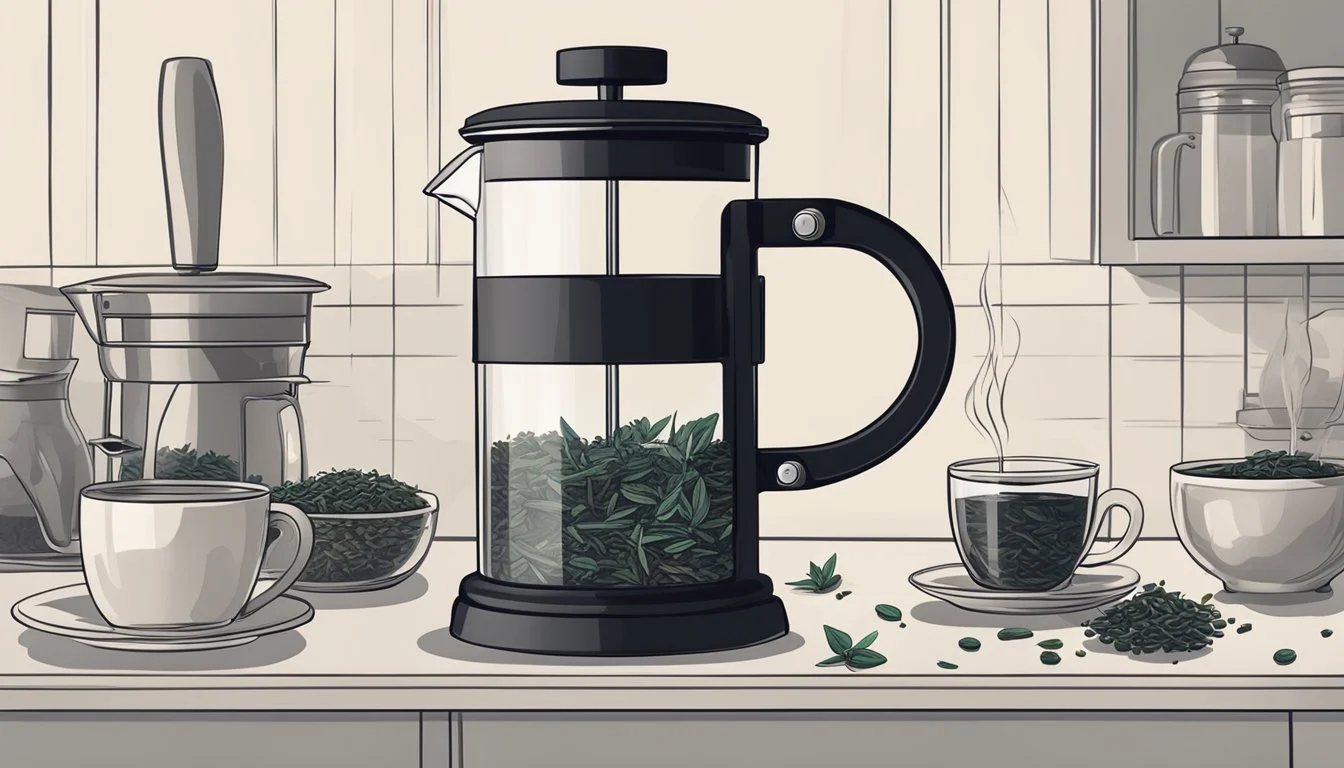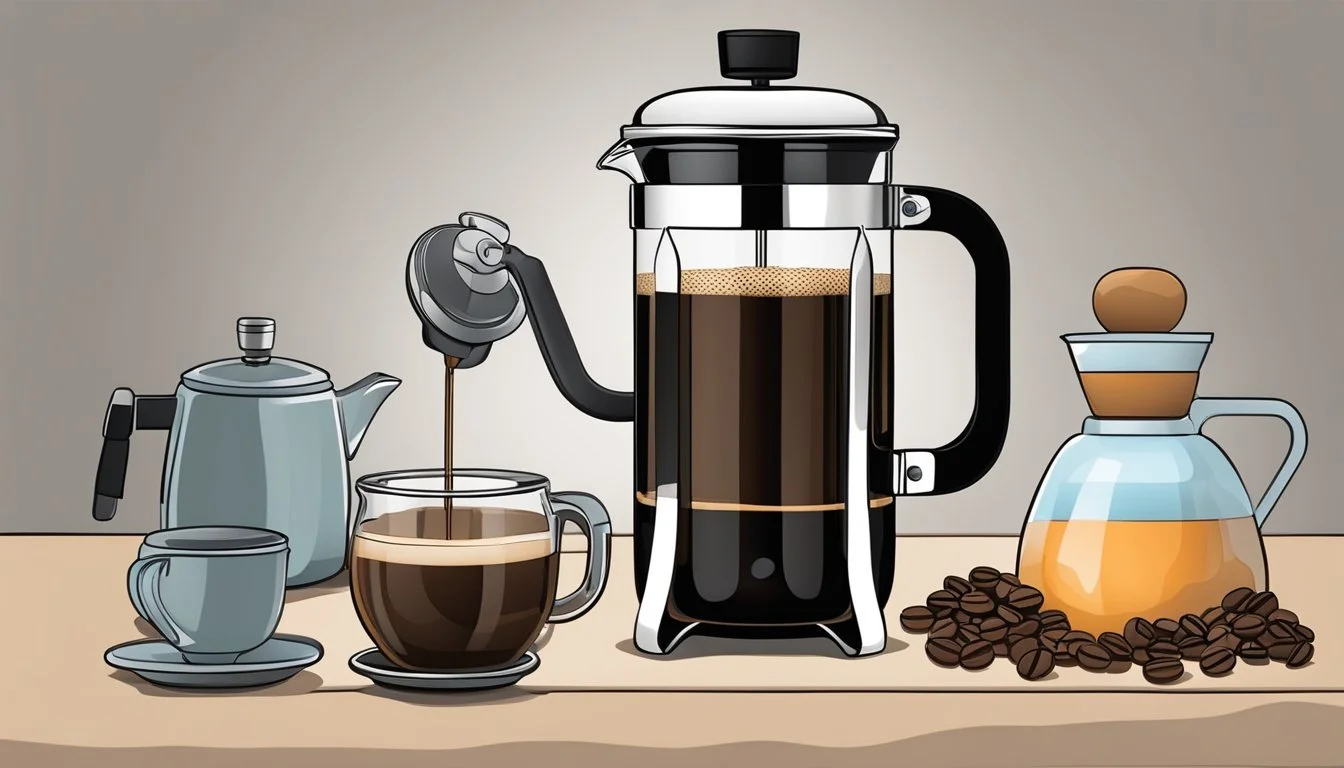How to Use a French Press for More Than Just Coffee
Versatile Kitchen Hacks
A French press, traditionally celebrated for its robust coffee brewing capabilities, is often overlooked for its versatility in the kitchen. This simple yet elegant device can be utilized to prepare a wide variety of beverages and infusions, offering a straightforward method to extract flavor from various ingredients. The secret lies in the French press's ability to steep ingredients in hot water and then separate them cleanly with its built-in filter.
Exploring beyond coffee, one can use a French press to steep loose-leaf tea, create rich hot chocolates, or infuse water with fresh fruits, herbs, and spices. The full immersion technique employed by a French press allows for a complete extraction of flavors, ensuring each sip is rich and fully developed. Moreover, its manual operation gives the user complete control over the steeping time and temperature, which are crucial elements in crafting a perfect beverage.
The design of the French press is ideal for experimentation, allowing culinary enthusiasts and beverage aficionados to branch out from the conventional. They can refine their palate through a range of aromatic and flavorful drinks without the need for specialized equipment. The French press proves to be a multifaceted tool in any kitchen, emphasizing that its applications are only limited by one's creativity.
Understanding the French Press
A French press is a versatile coffee brewing device known for its simplicity and the rich, full-bodied coffee it produces. This section explains the key components and techniques involved, essential for anyone aiming to master the use of a French press for coffee and beyond.
Components and Design
A French press consists of a carafe typically made of glass or stainless steel, a plunger with a rod connected to a mesh filter, and a handle for safe handling. The mesh filter presses the coffee grounds down, separating them from the liquid after brewing.
Types of French Press
Manufacturers like Bodum and Espro offer various models. The Bodum Chambord French Press is a classic choice, while the Espro Press touts a double filter design for a cleaner cup.
The Role of Coffee Beans
Using high-quality coffee beans is critical—they should be freshly roasted, whole beans. The bean variety and origin greatly influence flavor; experiment to find your preference.
Selecting the Right Water
Start with filtered water to ensure no impurities affect the taste. The quality of water used is just as crucial as the quality of the coffee beans.
Grind Size and Texture
For a French press, a coarse grind is ideal as it complements the immersion brewing method and won't pass through the mesh filter. A grind that is too fine will lead to over-extraction and a gritty cup.
Brewing Methodology Overview
The brewing process of a French press is straightforward. It relies on immersion brewing, which involves steeping coffee grounds fully in hot water, allowing an even extraction.
Temperature and Its Impact on Flavor
Ideal water temperature should be around 200° Fahrenheit. Use a thermometer if possible, as proper temperature is key to extracting the full range of flavors without bitterness.
Coffee-to-Water Ratio
A common ratio is 1:12, 1 part coffee to 12 parts water. This translates to roughly 7-8 grams of coffee per every 200 ml of water. Adjust to taste.
Timing Your Brew
A typical brew time is four minutes before plunging, but adjust based on the desired strength. A longer time results in a stronger brew, while a shorter time yields a lighter cup.
Advanced Techniques
Advanced techniques include the "bloom" process, where hot water is initially poured over the grounds to release gases before the rest of the water is added. It can enhance flavor by allowing a more even saturation. Experiment with different steep times and agitation methods to refine your technique.
Step-by-Step French Press Coffee Making
A well-prepared French press coffee offers a rich and full-bodied flavor that is unmatched by other brewing methods. This section guides the reader through each step for making the ideal cup of coffee using a French press.
Preparation
Before brewing, it's crucial to preheat the French press to ensure the coffee maintains its temperature. Fill the carafe with hot water and let it sit. Meanwhile, measure your coffee grounds with a scale to get a consistent flavor each time. A coarser grind works best to prevent sediment.
Coffee and Water Combination
Discard the preheating water and add the coarse-ground coffee to the bottom of the French press. Pour hot water—just off the boil, around 200 degrees Fahrenheit—over the grounds. A 1:15 coffee-to-water ratio is typically recommended.
The Steeping Process
Start a timer for about four minutes, which is the ideal steep time for extracting the full flavor without over-extraction. After adding the water, gently stir to ensure all grounds are wet and begin the brewing process. Replace the lid with the plunger pulled all the way up to retain heat.
Plunge with Precision
When the time is up, hold the lid with one hand and use the other to plunge steadily with consistent pressure. The mesh filter should push the grounds to the bottom, providing clean filtration.
Serving Recommendations
Promptly serve the coffee to avoid oversteeping, which can alter the flavor and mouthfeel of the beverage. If not serving immediately, transfer the coffee to a separate carafe to prevent it from sitting on the grounds.
Cleaning and Maintenance
Once done, dispose of the grounds and clean the French press thoroughly. Use warm, soapy water to scrub the carafe and filter. Regular maintenance keeps the French press in optimal condition, ensuring the purity of each cup of coffee.
Beyond Coffee: Alternative Uses for a French Press
The French Press is not limited to just brewing coffee. It offers a multitude of other applications, from steeping tea to frothing milk, which can elevate one's home beverage repertoire with ease.
Brewing Loose-Leaf Tea
A French Press can expertly brew loose-leaf tea by keeping the leaves contained during infusion. Steep the tea leaves in hot water using the press for a clean pour, ensuring that the flavors are extracted without leaving residue in your cup.
Infusing Flavors into Water
One can craft naturally flavored water by adding herbs, spices, or fruit to the base of a French Press. Add cold water, allow the flavors to infuse for several hours, then press and pour a refreshing, flavorful beverage.
Frothing Milk for Lattes
To froth milk for lattes or other creamy drinks, fill a third of the French Press with warm milk and rapidly move the plunger up and down. This aerates the milk, creating a desirable froth for that perfect latte top.
Crafting Cold Brew Concentrate
The French Press simplifies making cold brew coffee. Combine coarse coffee grounds with cold water, let the mixture steep for 12 to 24 hours, and use the plunger to separate the grounds from the cold brew concentrate.
Making Rich Broths and Infusions
Create flavorsome broths by adding your desired ingredients to the French Press. After simmering the broth, it can be transferred to the press for an easy strain, yielding a clear base for soups and stews.
Experiment with Drink Recipes
A French Press serves as an excellent tool to experiment with drink recipes. Mix various beverages or infuse flavor into spirits by allowing the drink to sit with chosen herbs or spices before pressing and serving.
Advanced French Press Techniques and Tips
Mastering the French Press not only involves the basic steps but also requires attention to detail to enhance the taste and flavor of your coffee. This section outlines several tips that will help fine-tune your brewing process for a more sophisticated coffee experience.
Manipulating the Brew for Desired Flavor
To adjust the flavor profile of your coffee, experiment with the coffee-to-water ratio, the grind size, and the brewing time. A finer grind and longer steep time can intensify the flavor, while a coarser grind and shorter time can yield a lighter taste. For stronger coffee, increase the coffee ratio up to 1:14; for a lighter brew, consider ratios closer to 1:16.
Importance of Clean Equipment
Ensure your French press is thoroughly cleaned to avoid the taste of old coffee oils and residue. Parts of the French press, such as the plunger and filter assembly, should be disassembled and cleaned after each use to maintain the purity of the coffee's flavor.
Troubleshooting Common French Press Issues
Sediment in the cup: Use a coarser grind to minimize fine particles.
Lack of foam: Ensure the water temperature is around 200°F to aid in creating the right amount of foam.
Over-extraction: Limit brew time to 4 minutes to prevent a bitter taste.
Coffee Grinding Tips
For the best flavor extraction, use a burr grinder for even-sized particles and grind your beans just before brewing. The grind should be coarse, resembling sea salt, which prevents excess fine particles that contribute to sediment.
Water Quality and Its Effects
Use filtered water if possible, as clean water contributes significantly to the taste of the brew. The water temperature should be between 195°F to 205°F for optimal flavor extraction without burning the grounds.
Exploring Different Coffee Beans and Roasts
Experiment with various coffee beans and roast levels. Medium roasts tend to emphasize balanced flavors, while dark roasts offer deeper, toasted notes. Each bean and roast will interact uniquely with your French press technique.
Variations in Brewing Time and Temperature
Adjusting the brewing time and water temperature can alter the extraction rate of coffee oils and flavors. A standard brewing time is around 4 minutes, but for a tailored brew, timing can vary from 3 to 5 minutes. Similarly, slight variations in water temperature can emphasize different flavor notes.
Final Thoughts and Recommendations
A French press is a versatile and straightforward tool that has earned its place in the kitchen. It is a preferred method for brewing coffee for many, offering a rich and full-bodied taste. Beyond its traditional use, it can also be utilized for making espresso, cold brew, and even non-caffeine infusions with ease.
The French press is accessible and affordable, making it an excellent choice for people who value high-quality drinks without the need for expensive, specialized equipment. For a deeper flavor akin to drip coffee, one can simply adjust the steeping time and experiment with the coffee-to-water ratio.
For enthusiasts looking to venture beyond coffee, a French press can be employed to steep loose leaf teas or create infused waters. The key to achieving the best results, regardless of the beverage, rests with using the right proportions and timings:
Espresso-style coffee: Use a finer grind and a shorter steep time, typically around ten seconds.
Cold brew: Opt for a coarser grind and a prolonged steep period of 12 hours or more, depending on the desired strength.
Herbal infusions: It requires only a few minutes to release flavors and essential oils from herbs and fruits.
In conclusion, the French press is a confident choice for anyone looking to expand their home brewing repertoire. It's easy to use and can produce a surprising variety of high-quality beverages. Embrace the experimentation process—adjust grinds, water temperature, and steep times to find one's ideal balance and open up a world of flavors in the comfort of one’s own kitchen.





